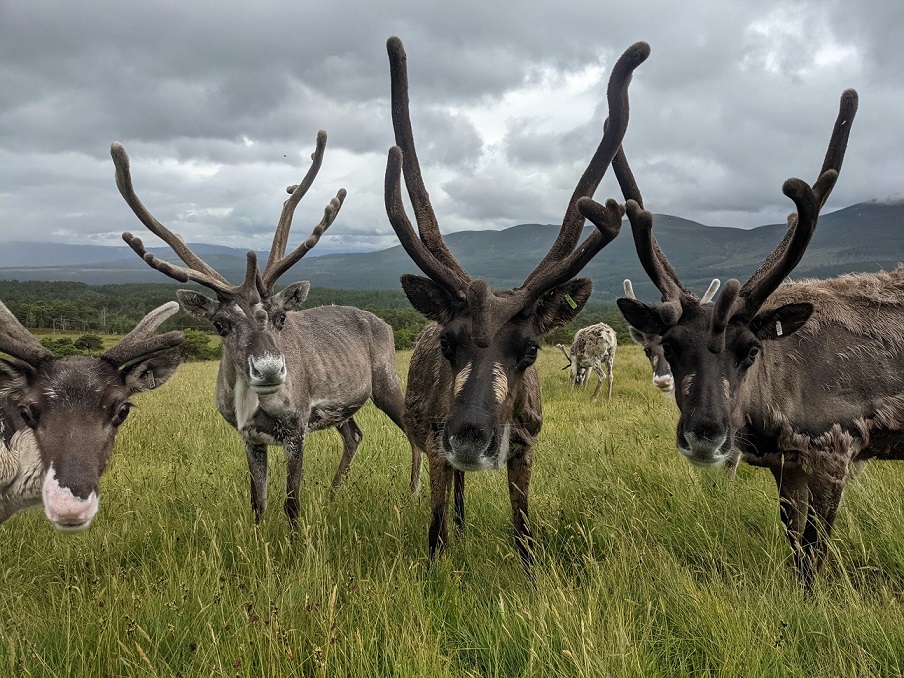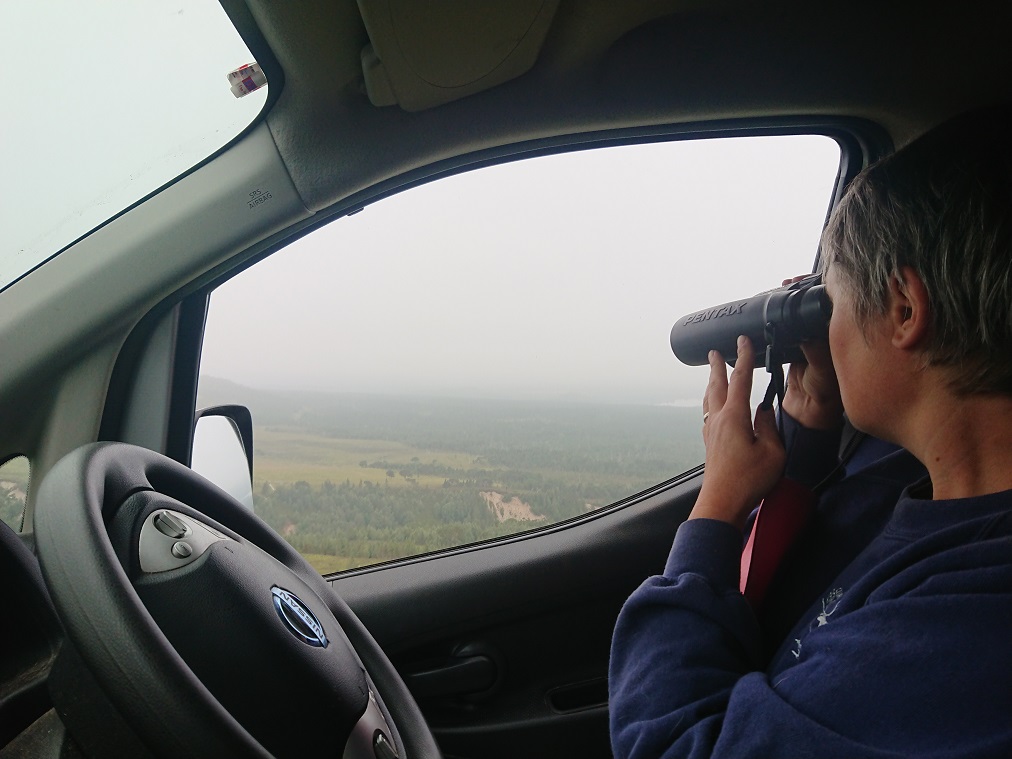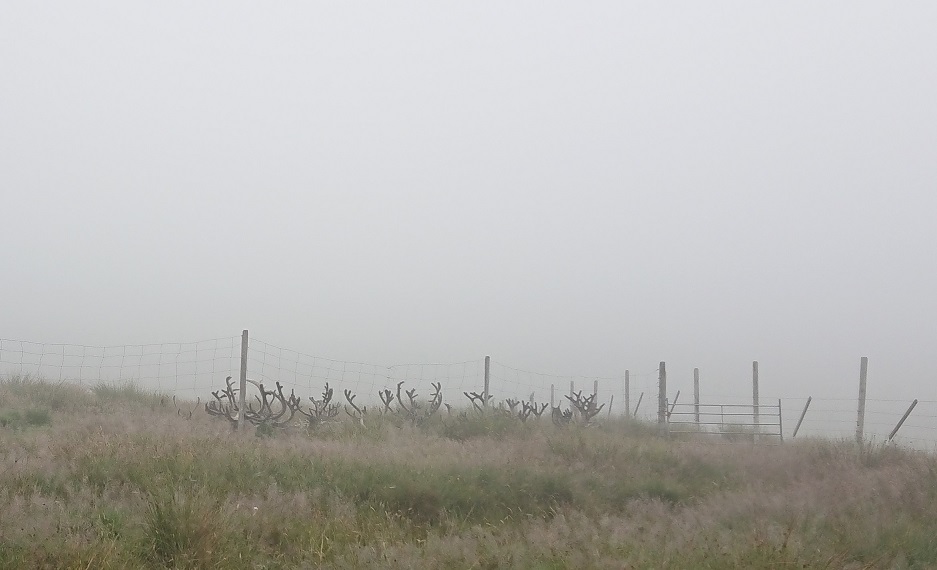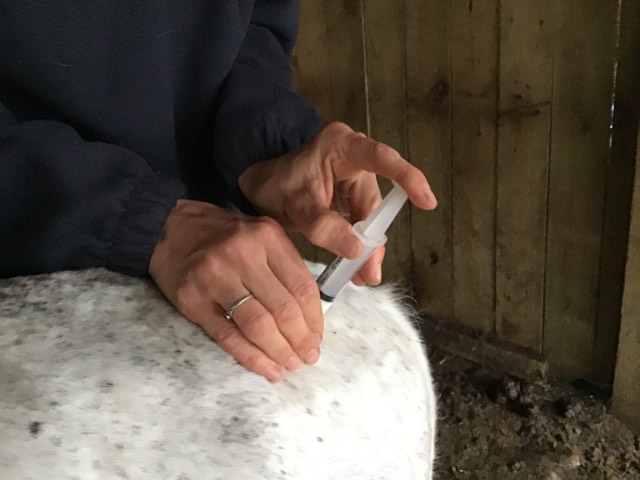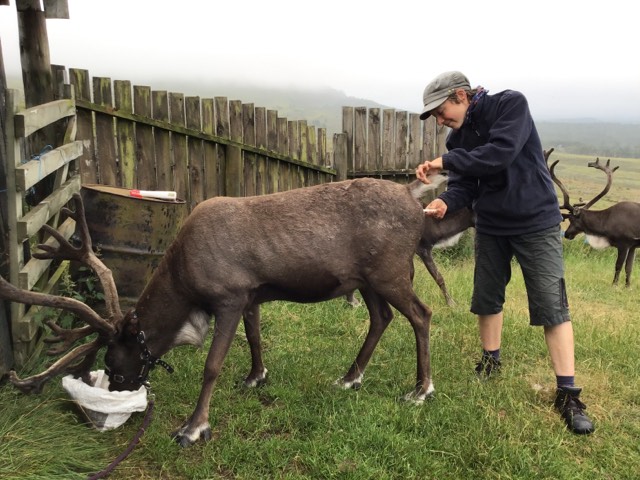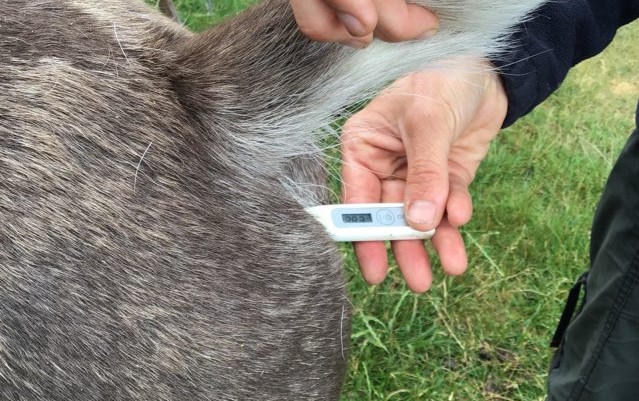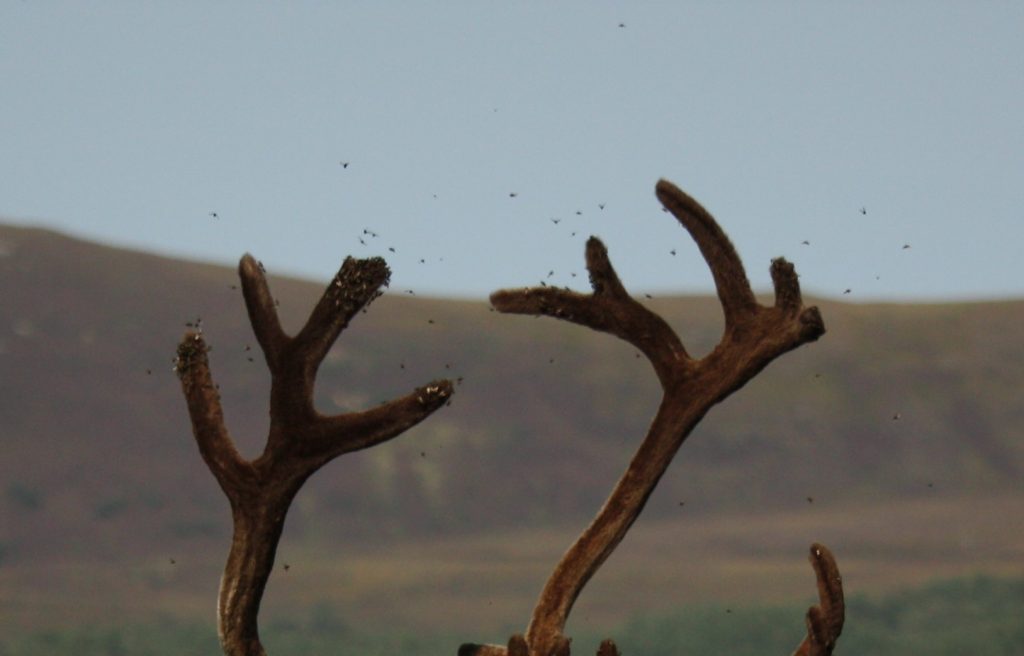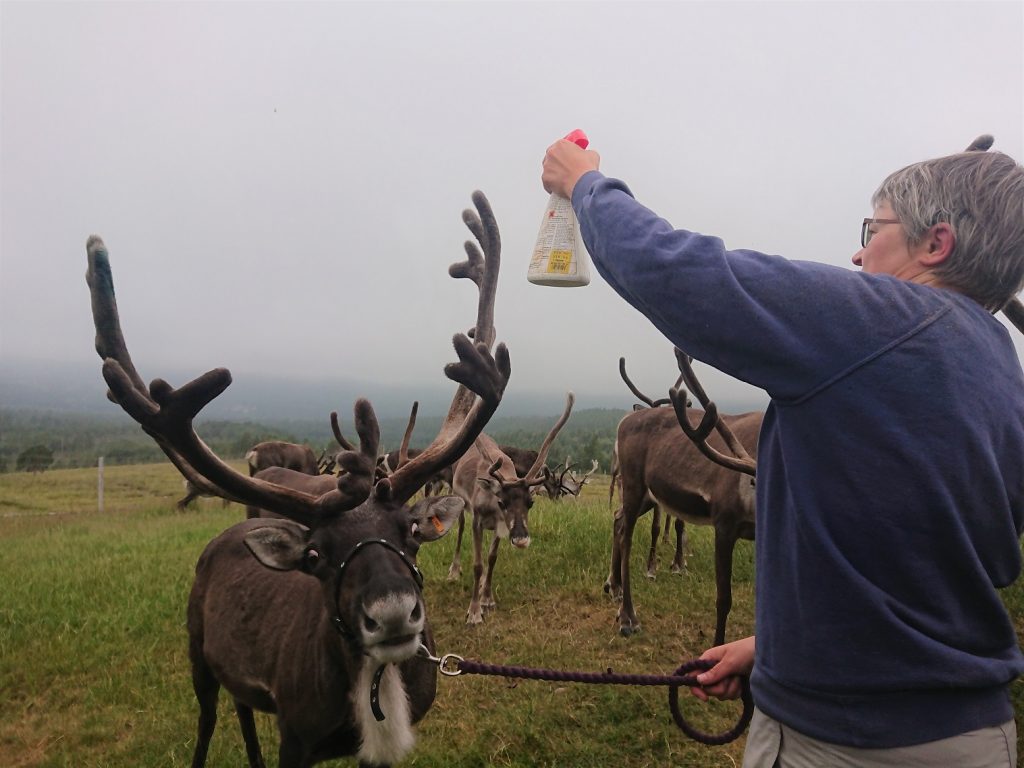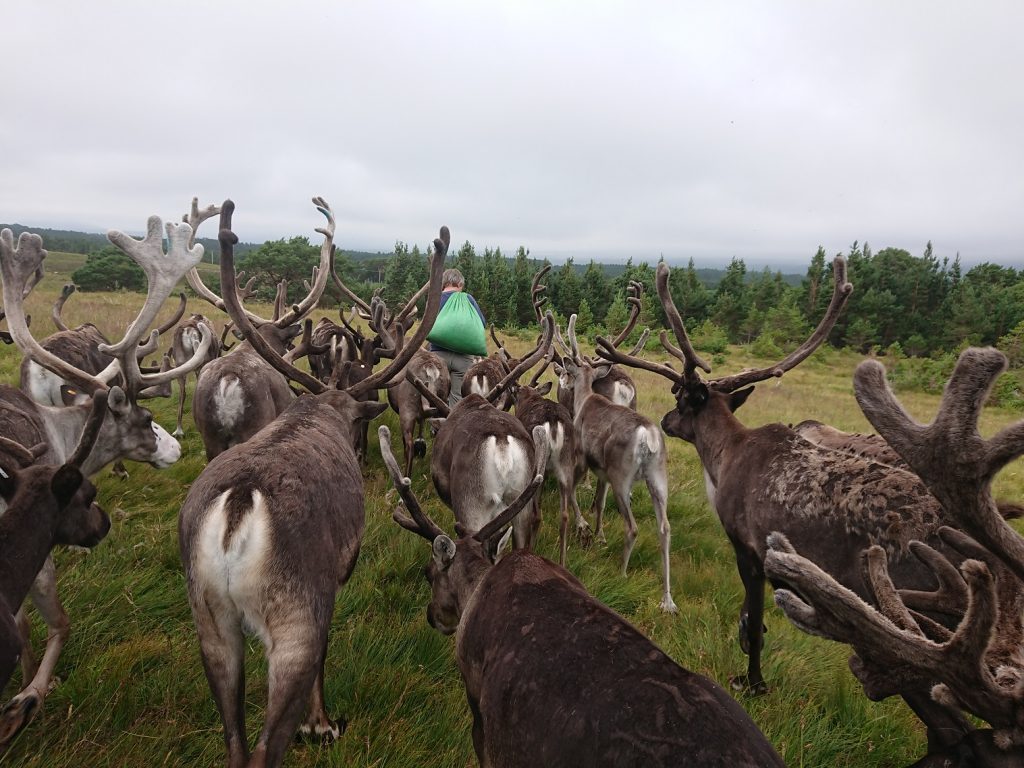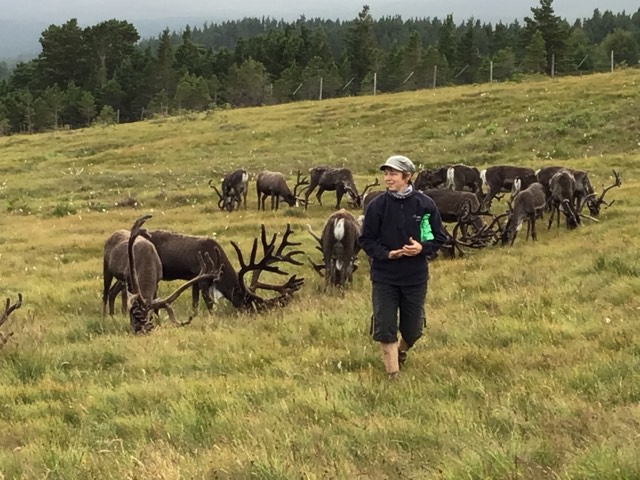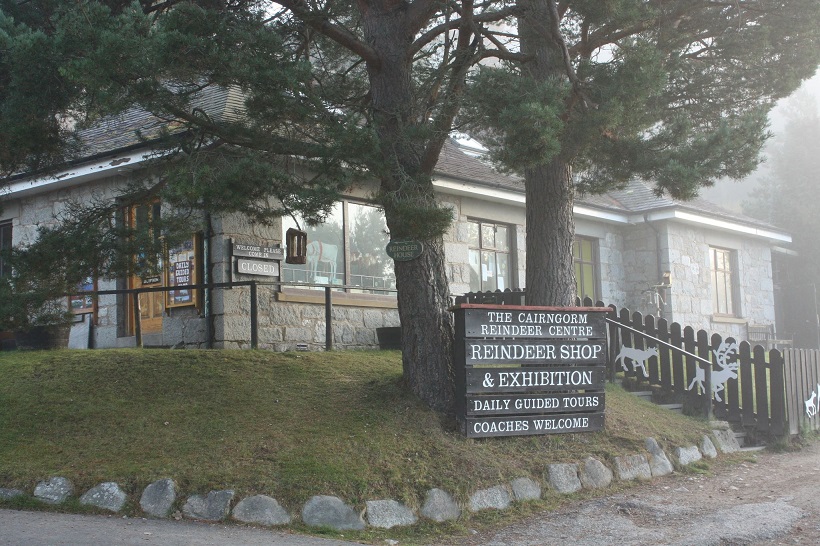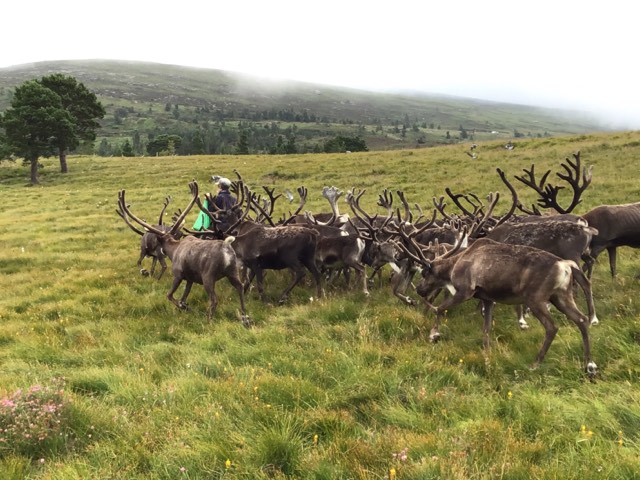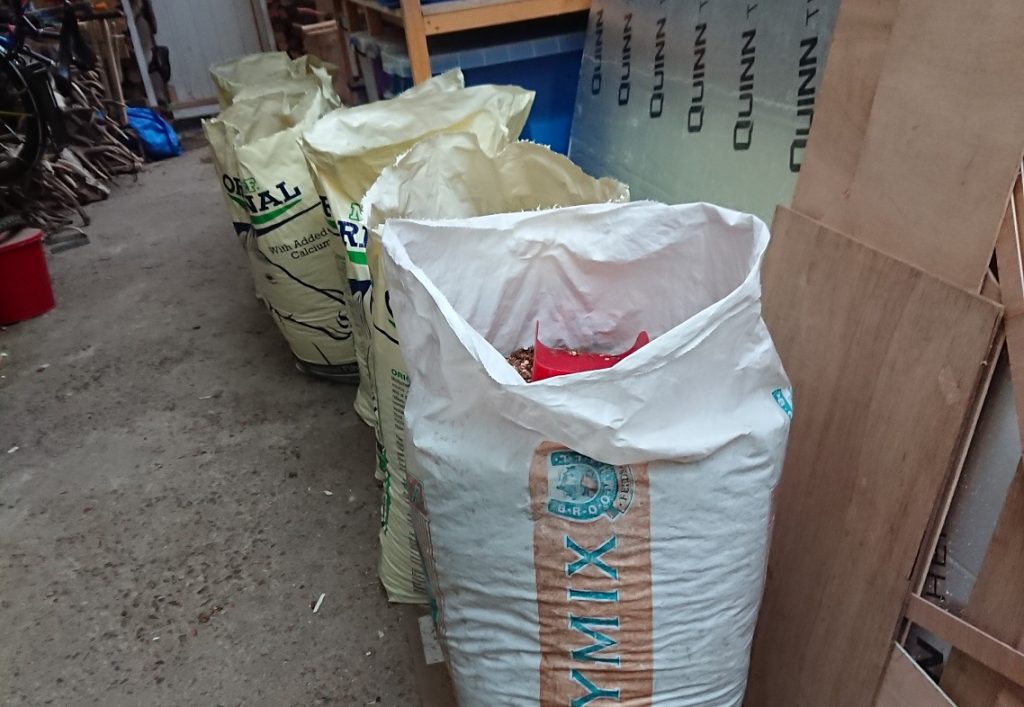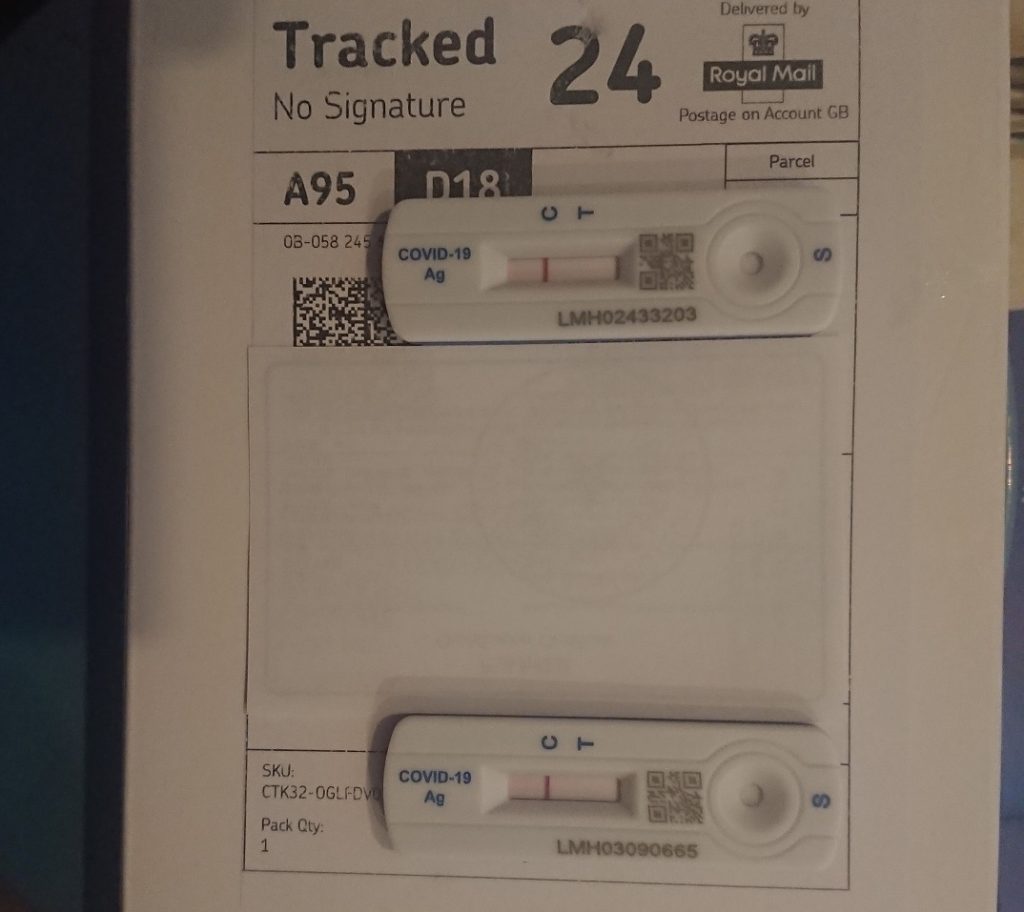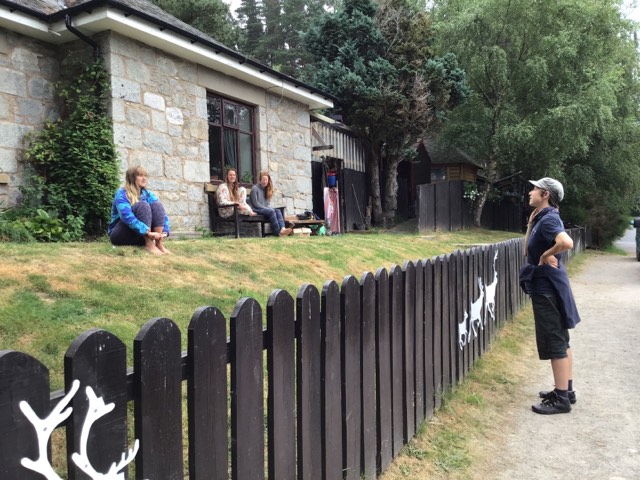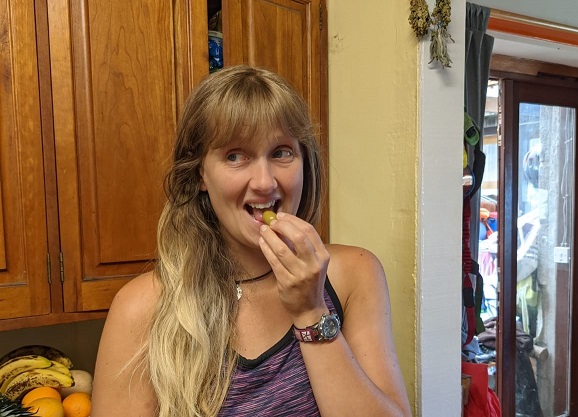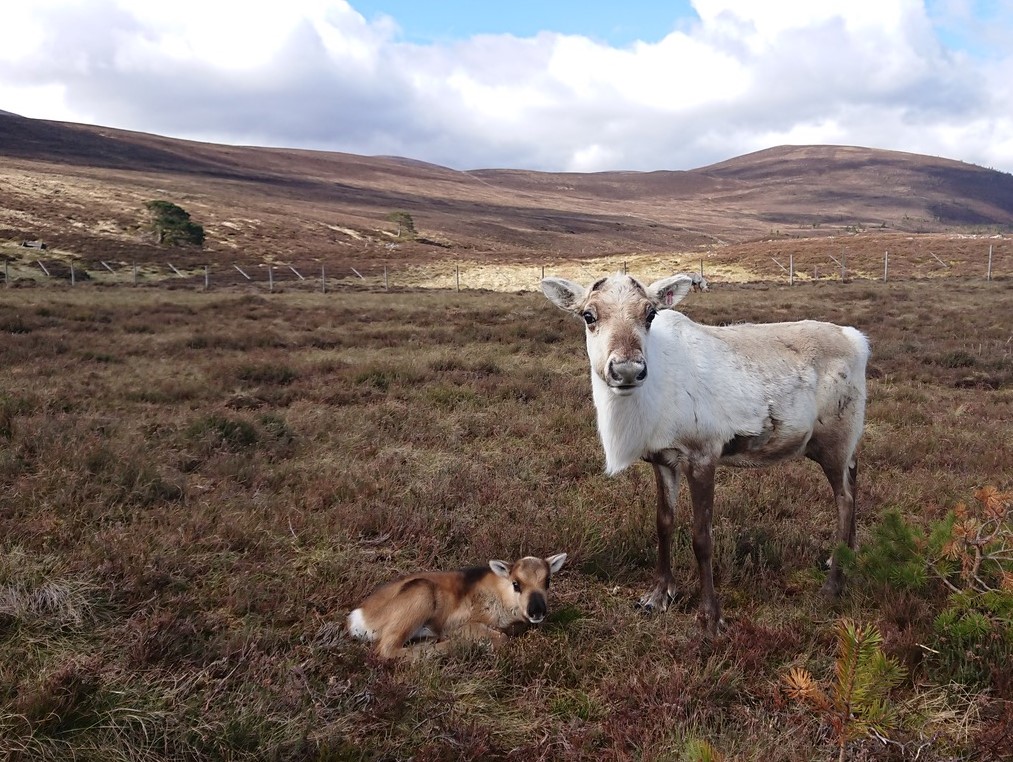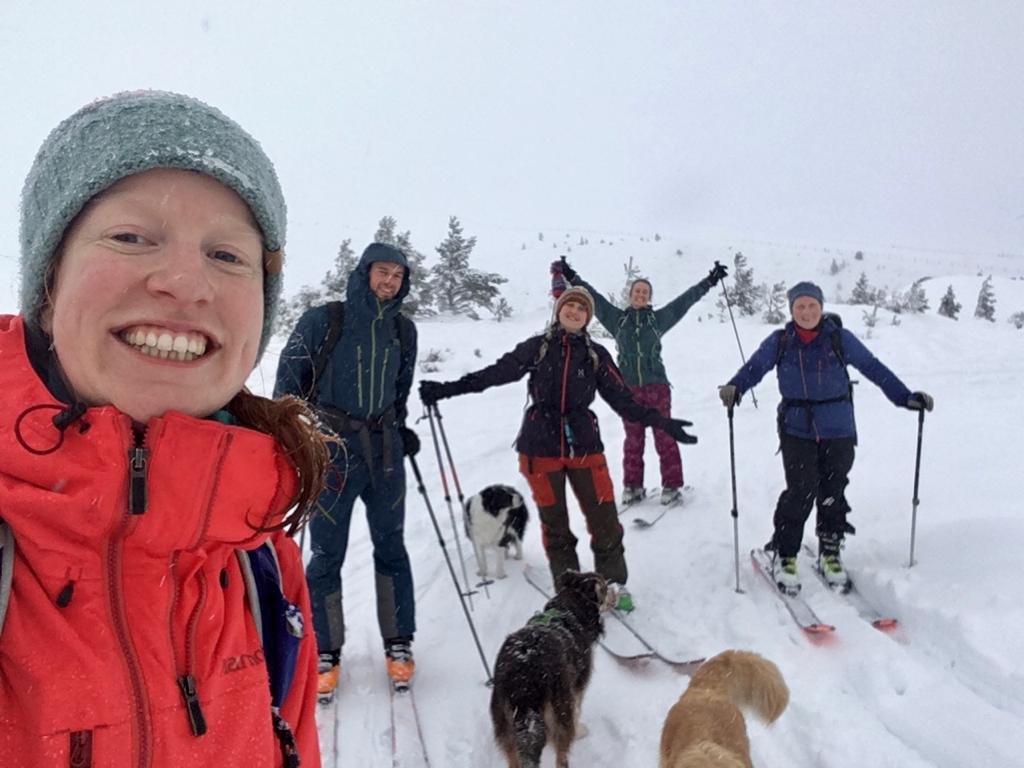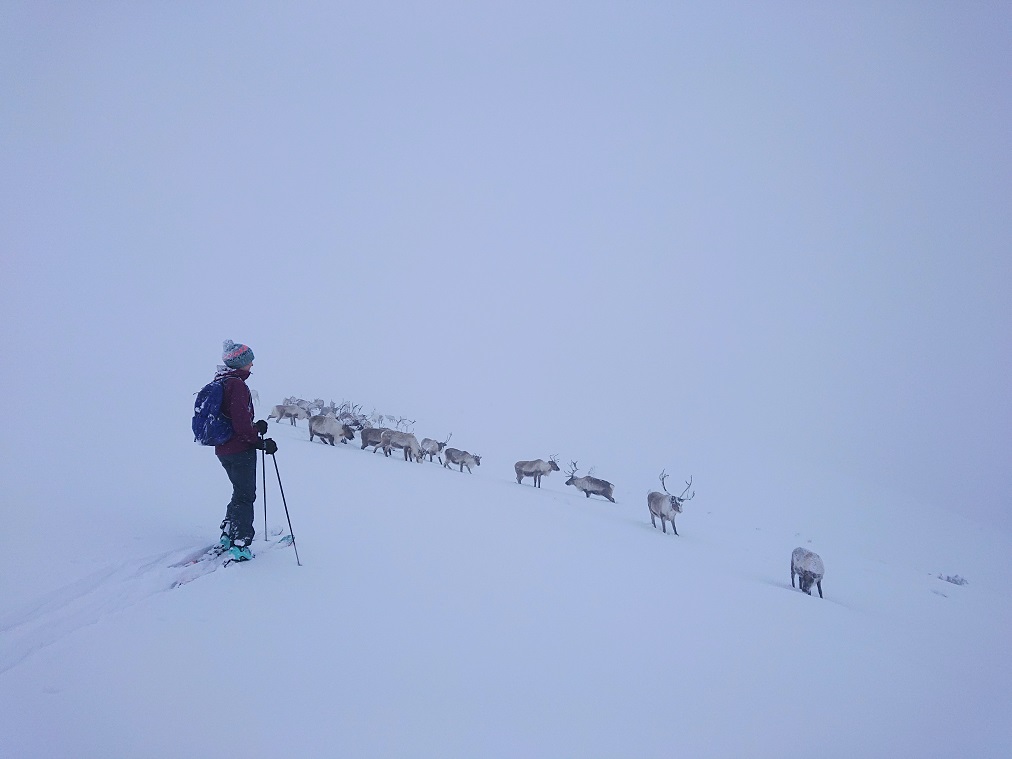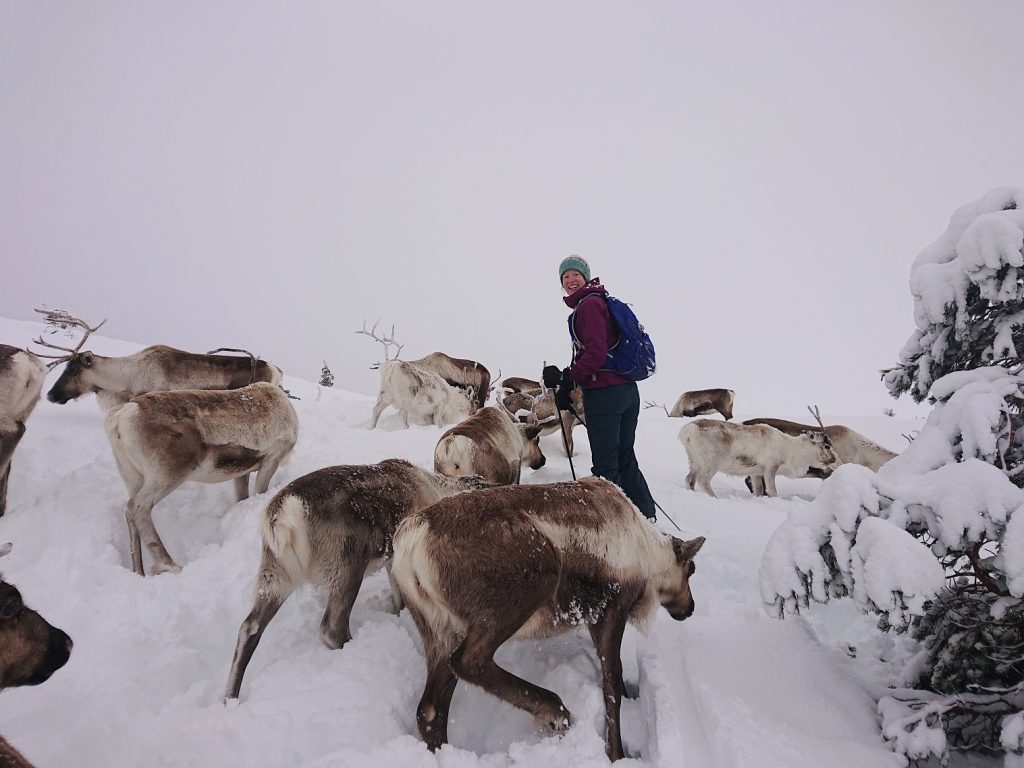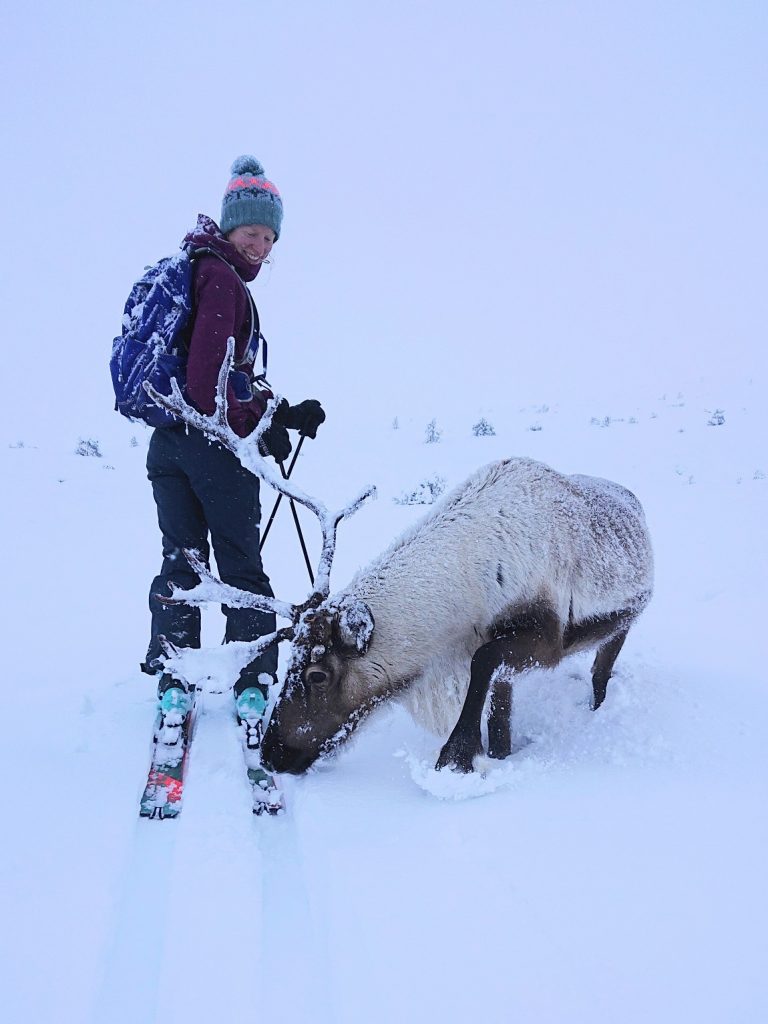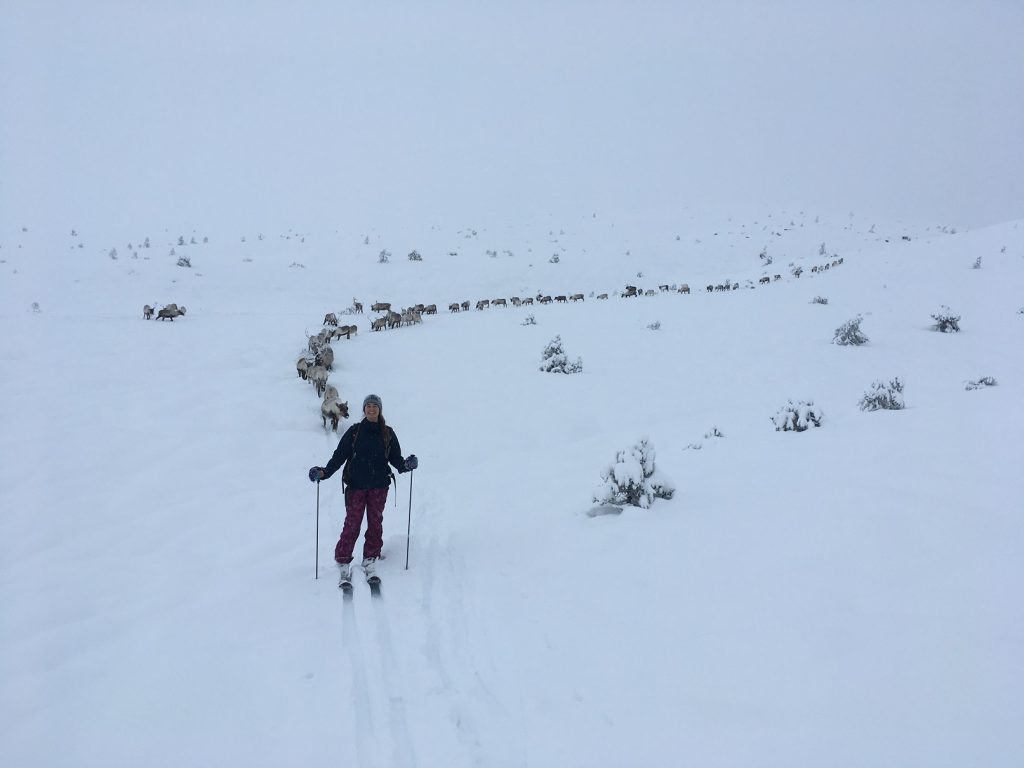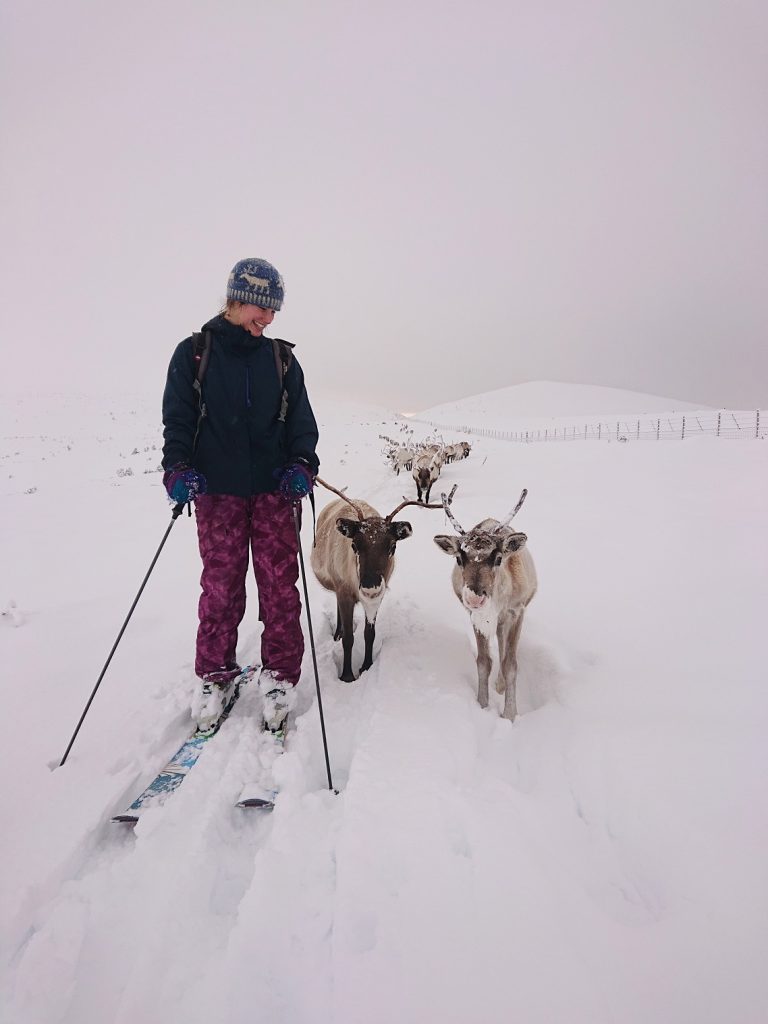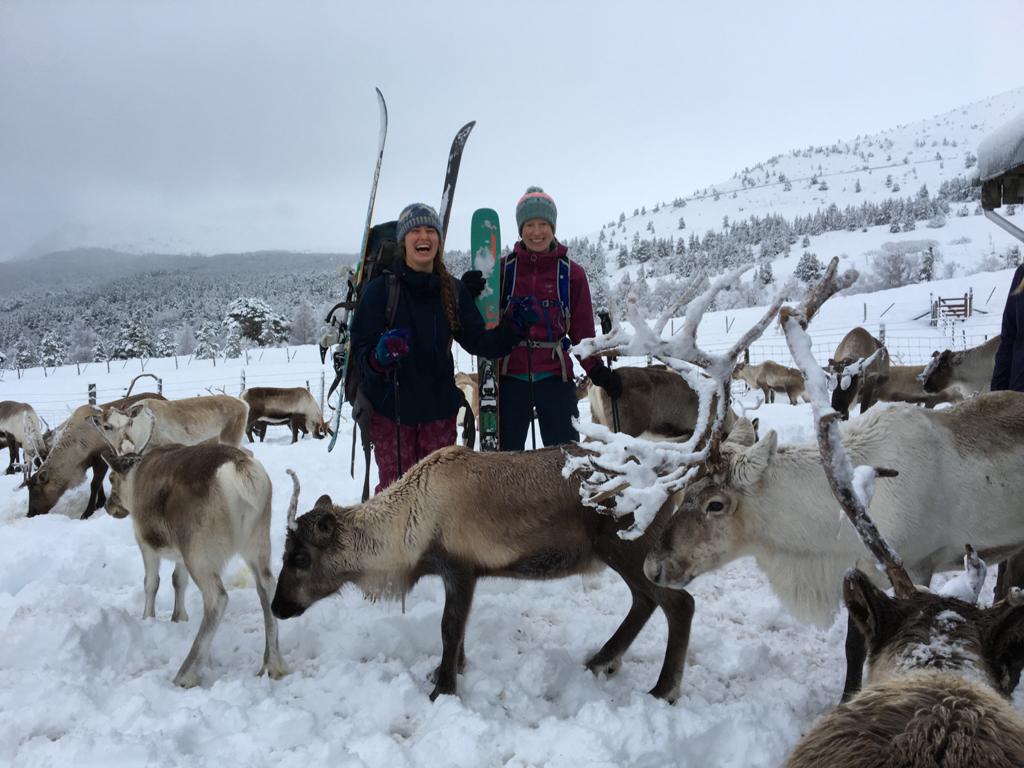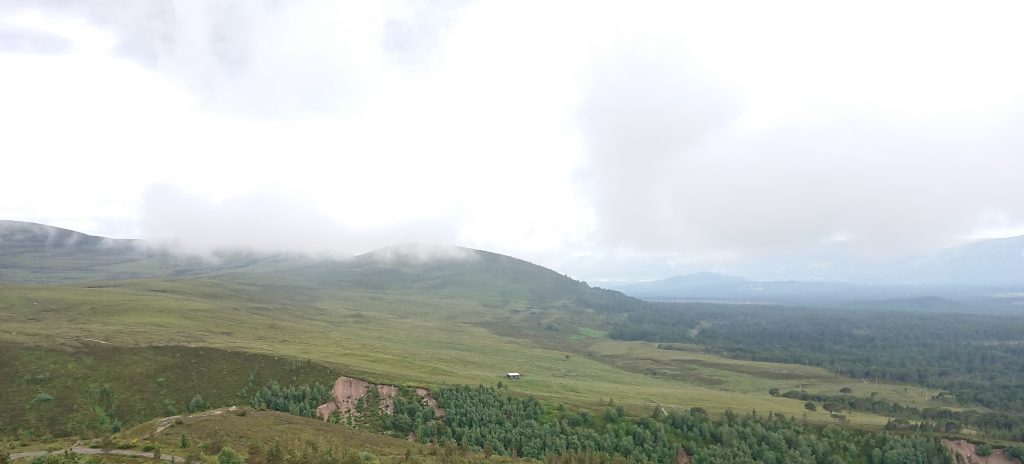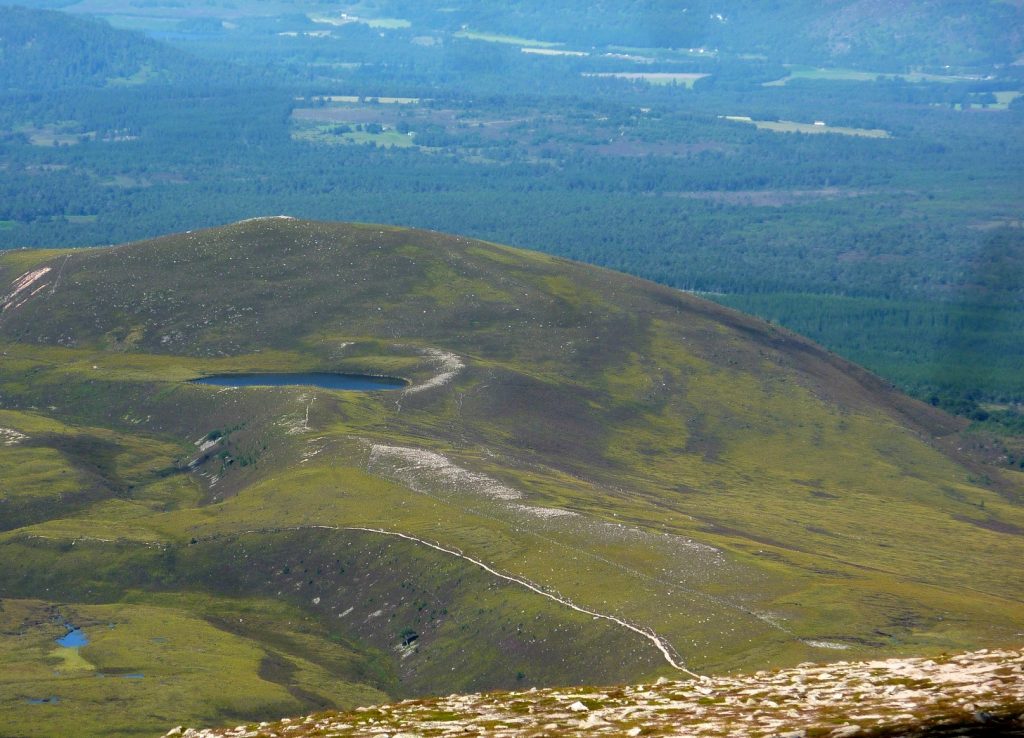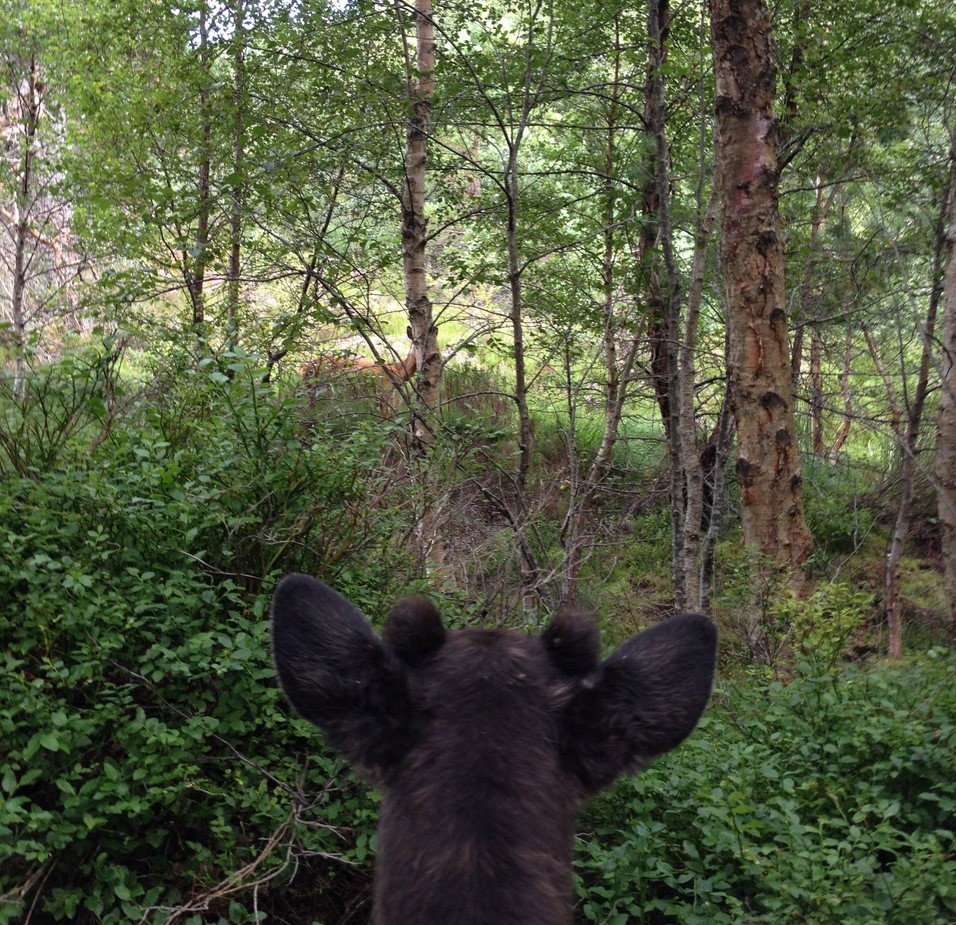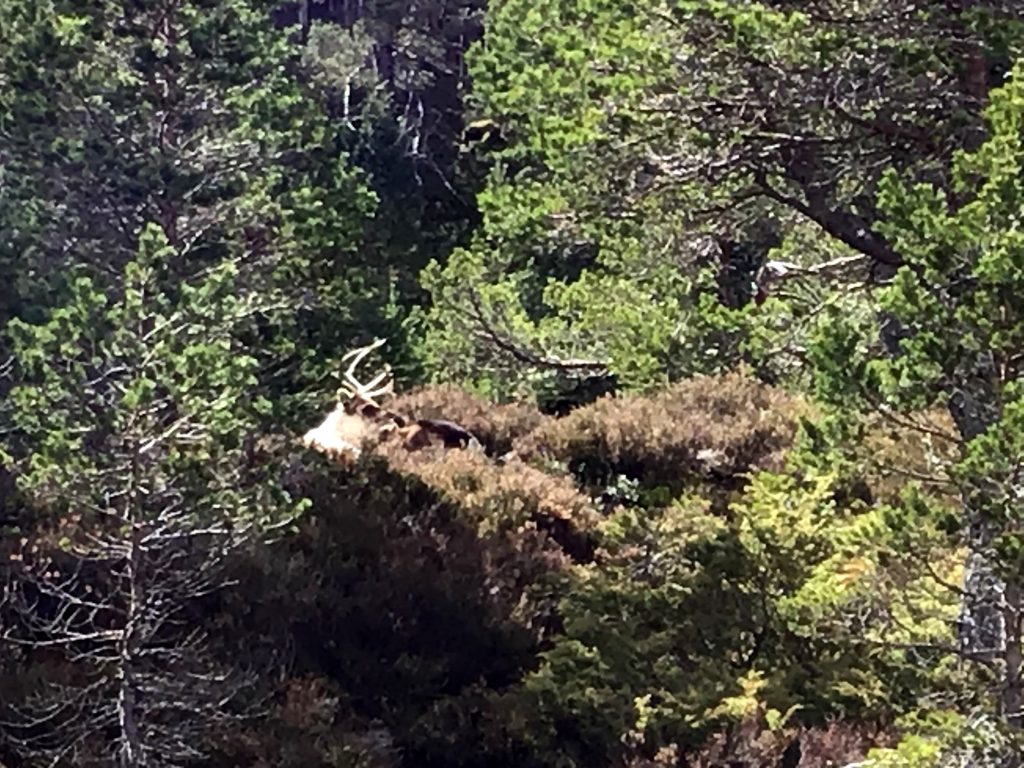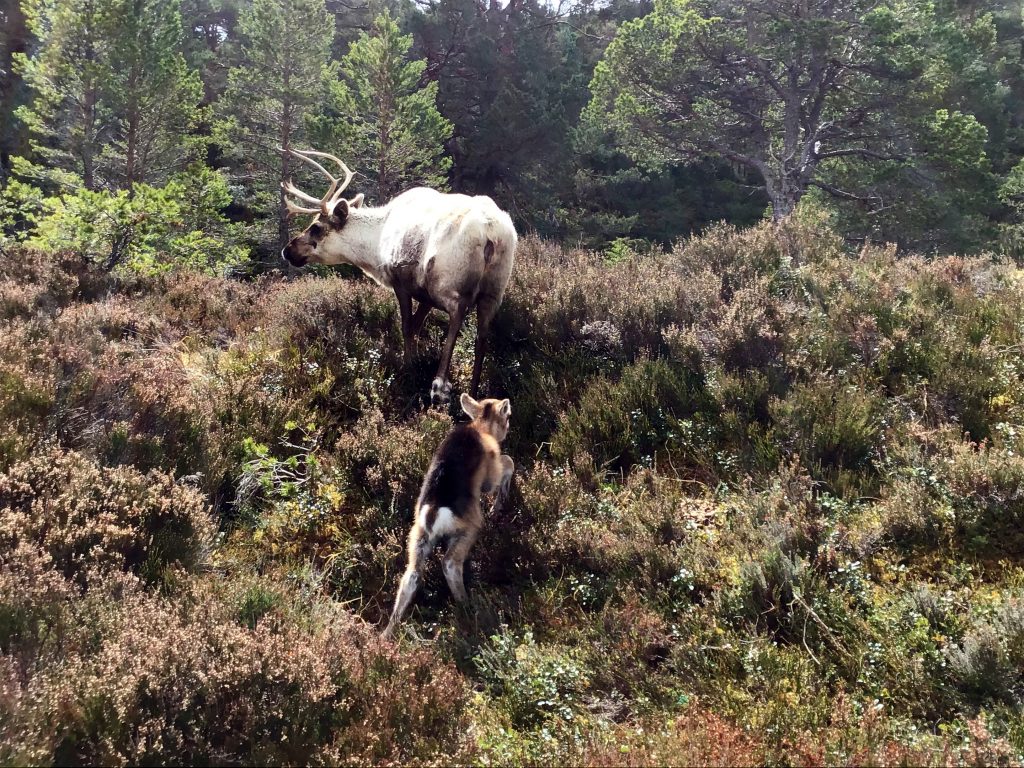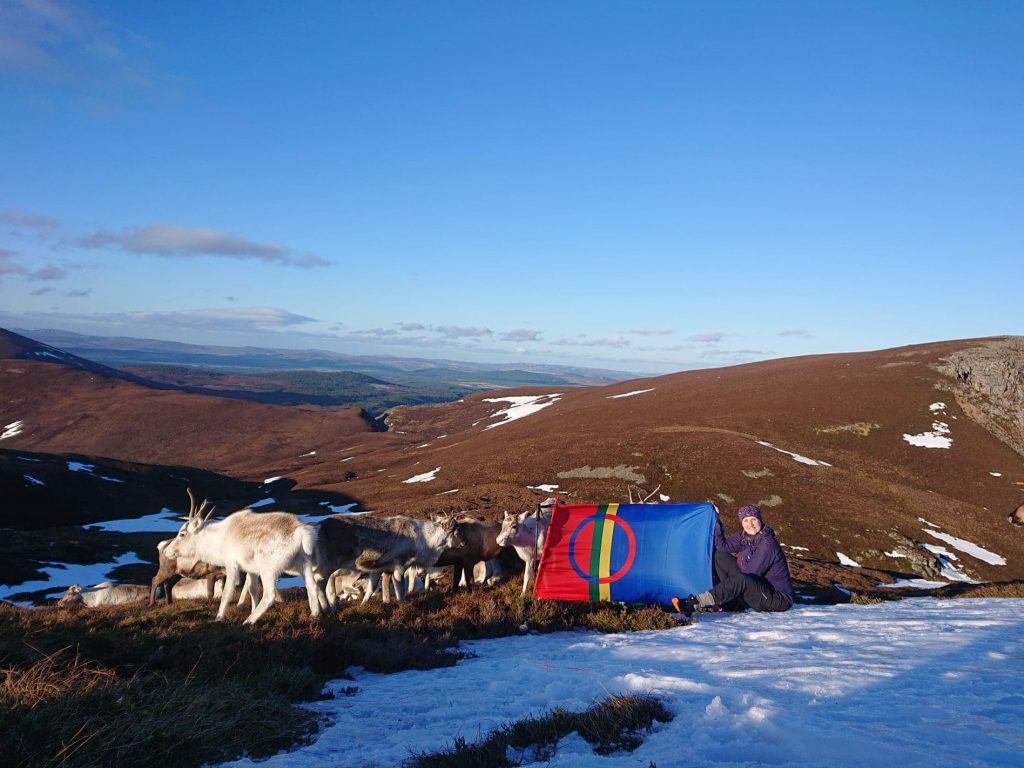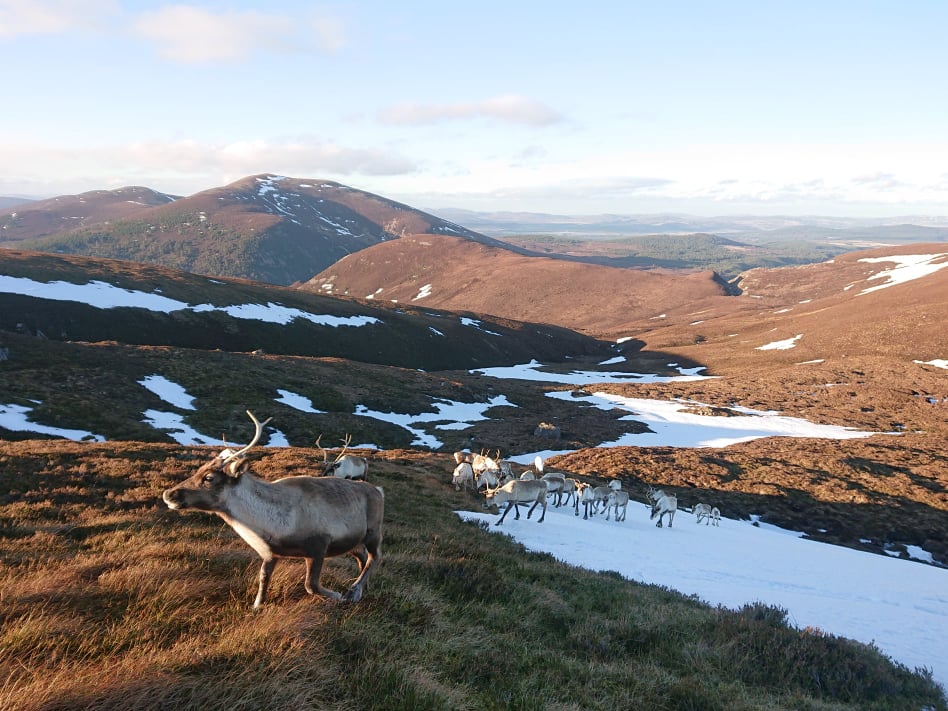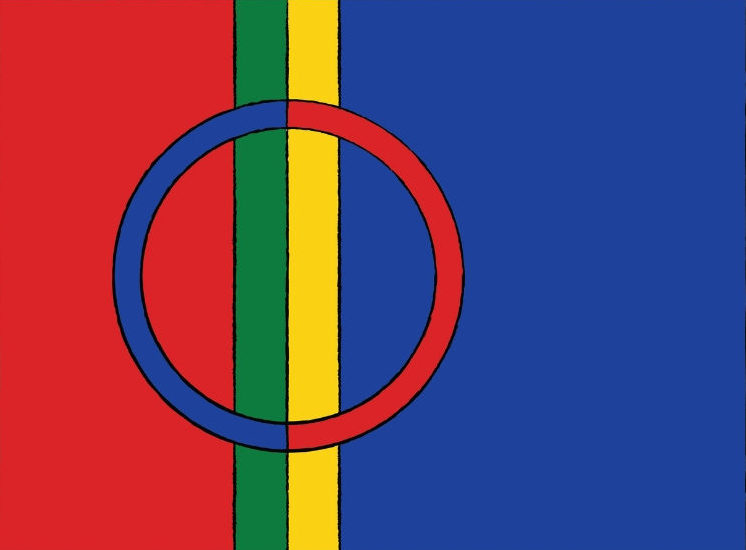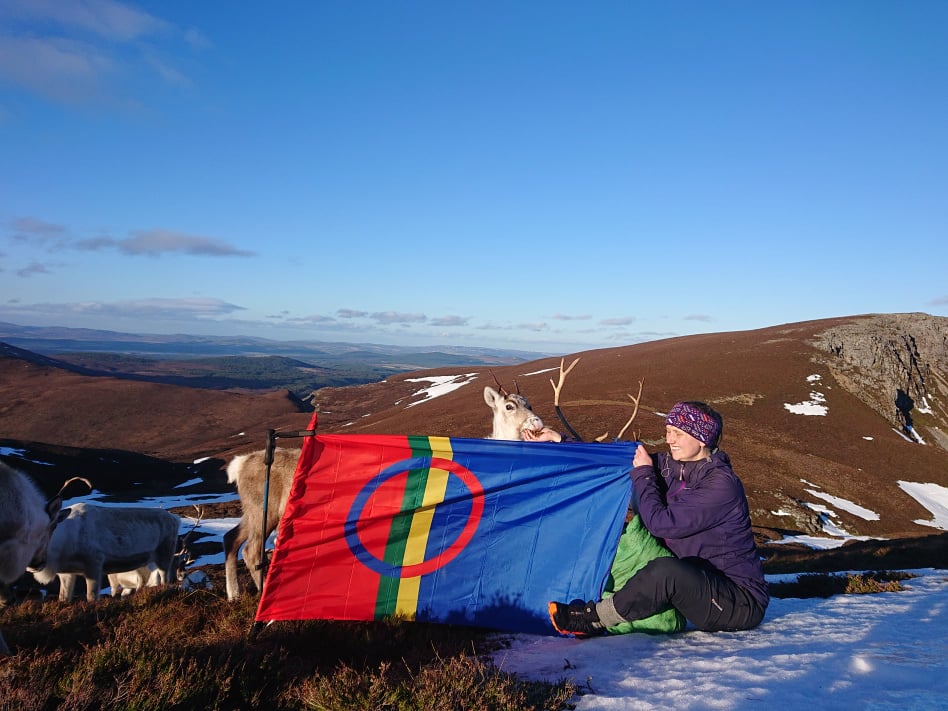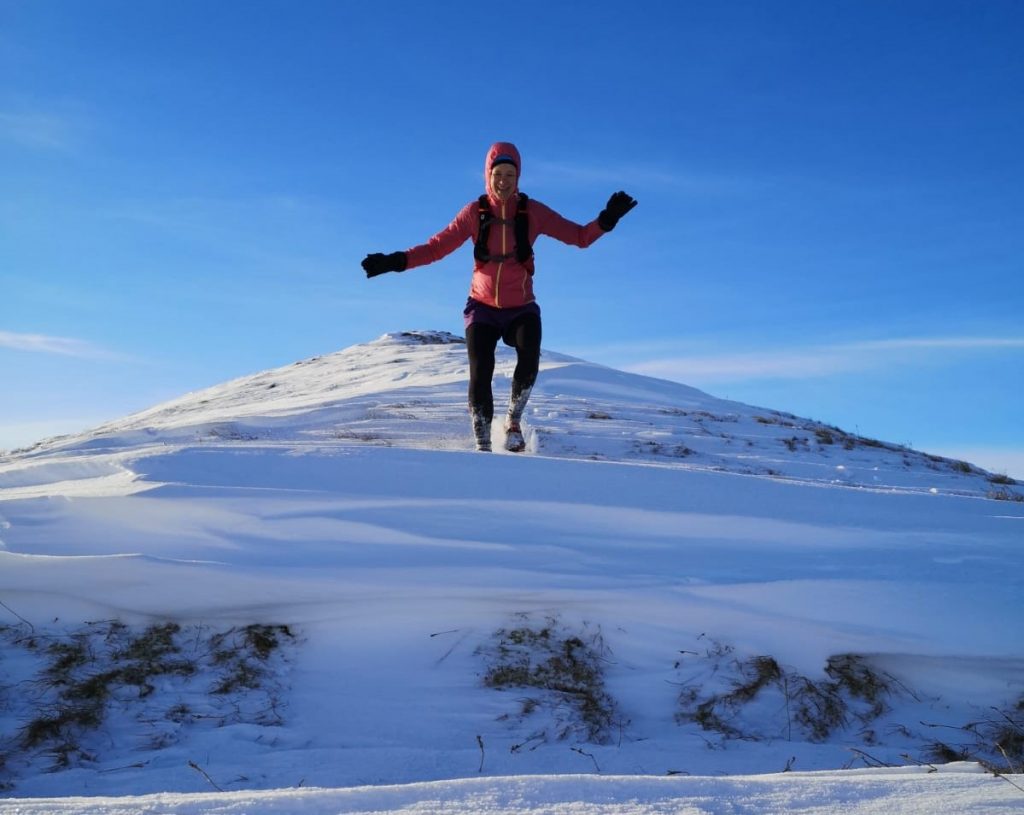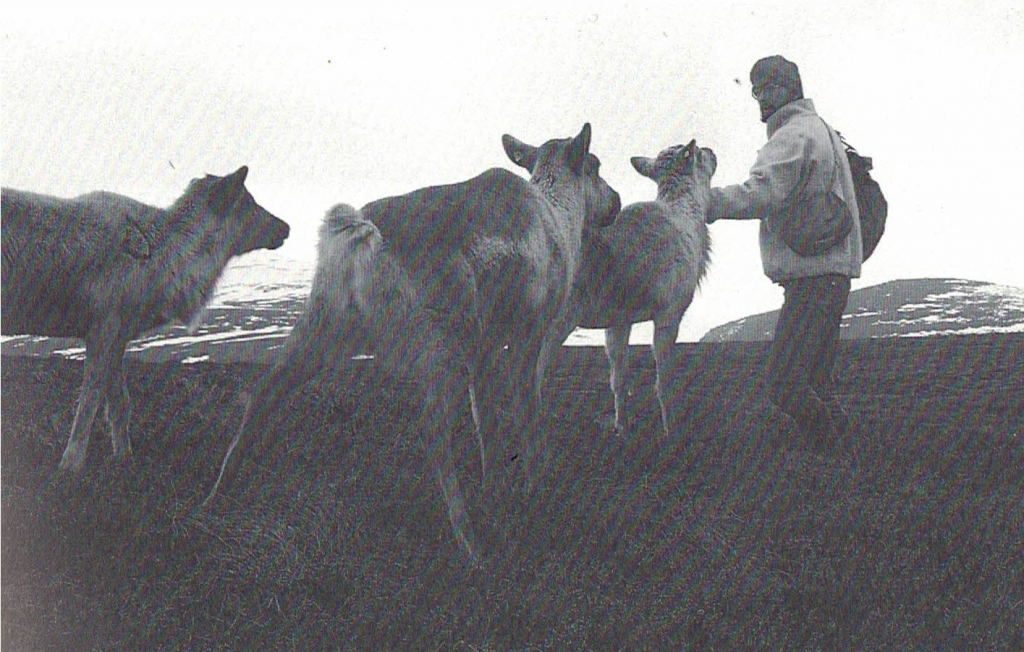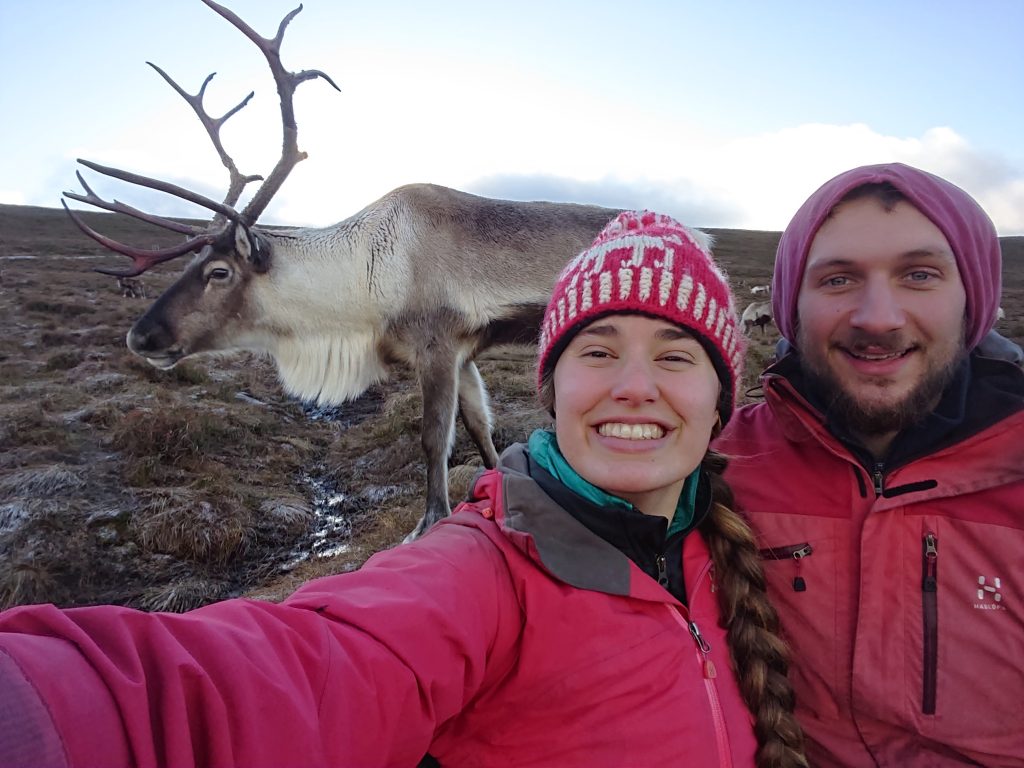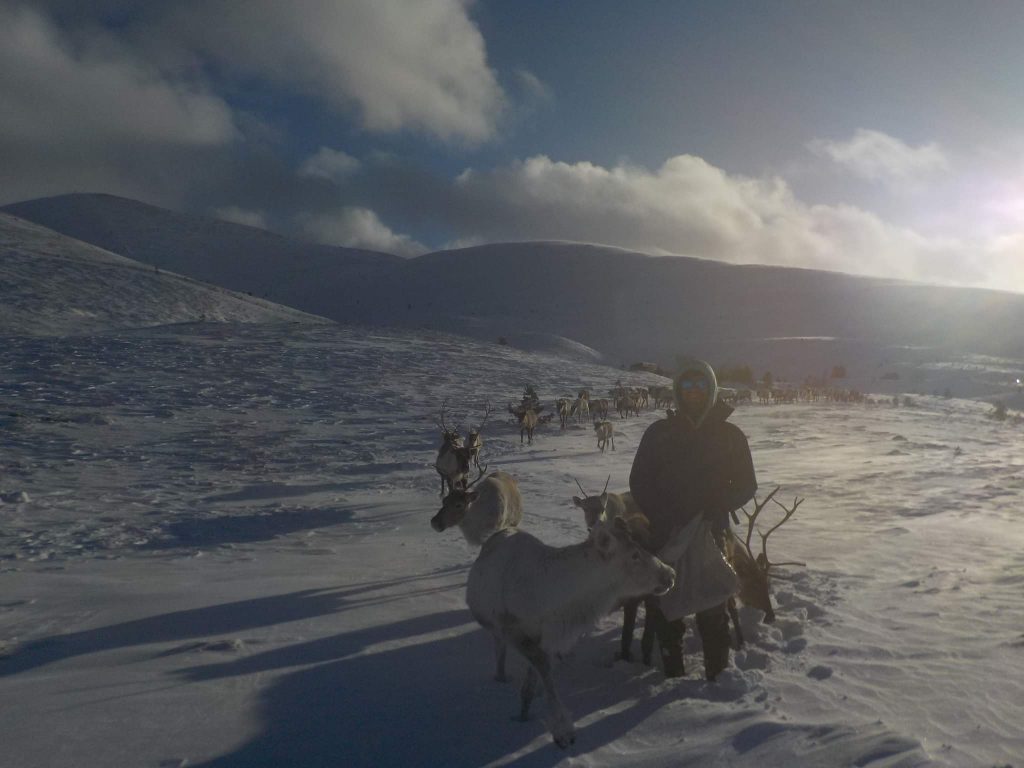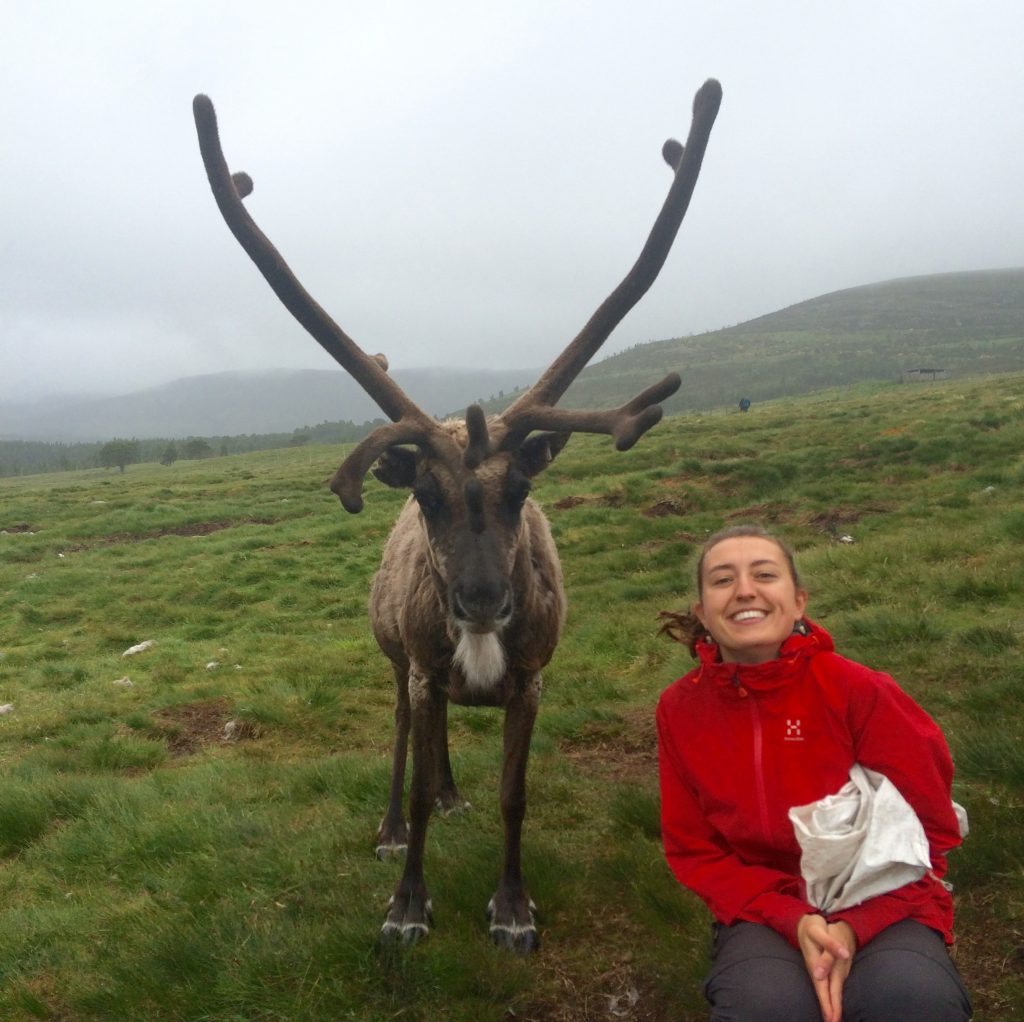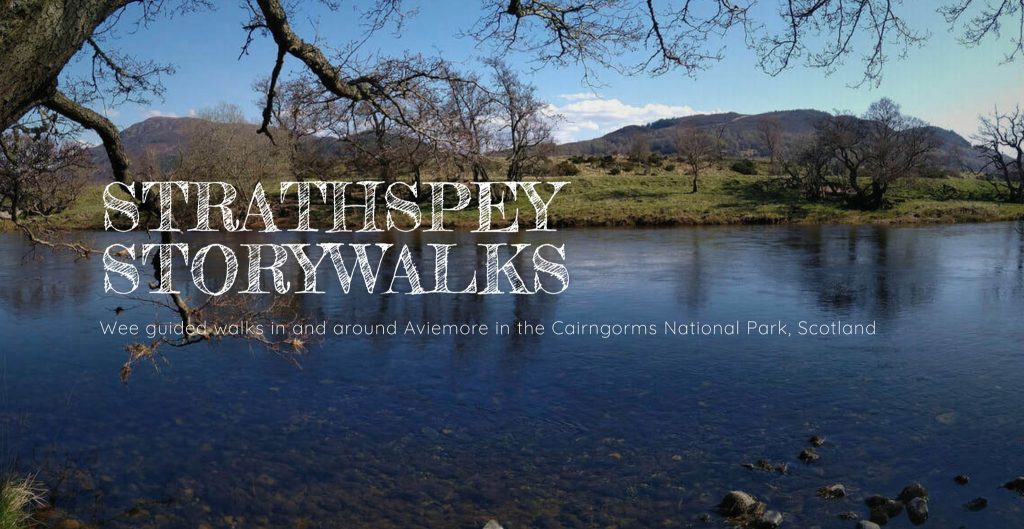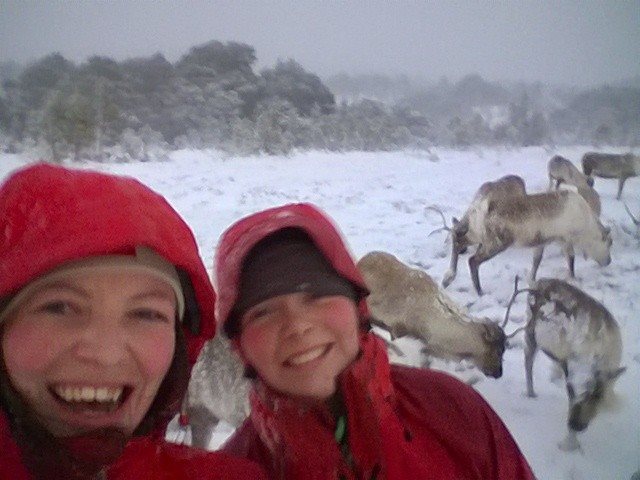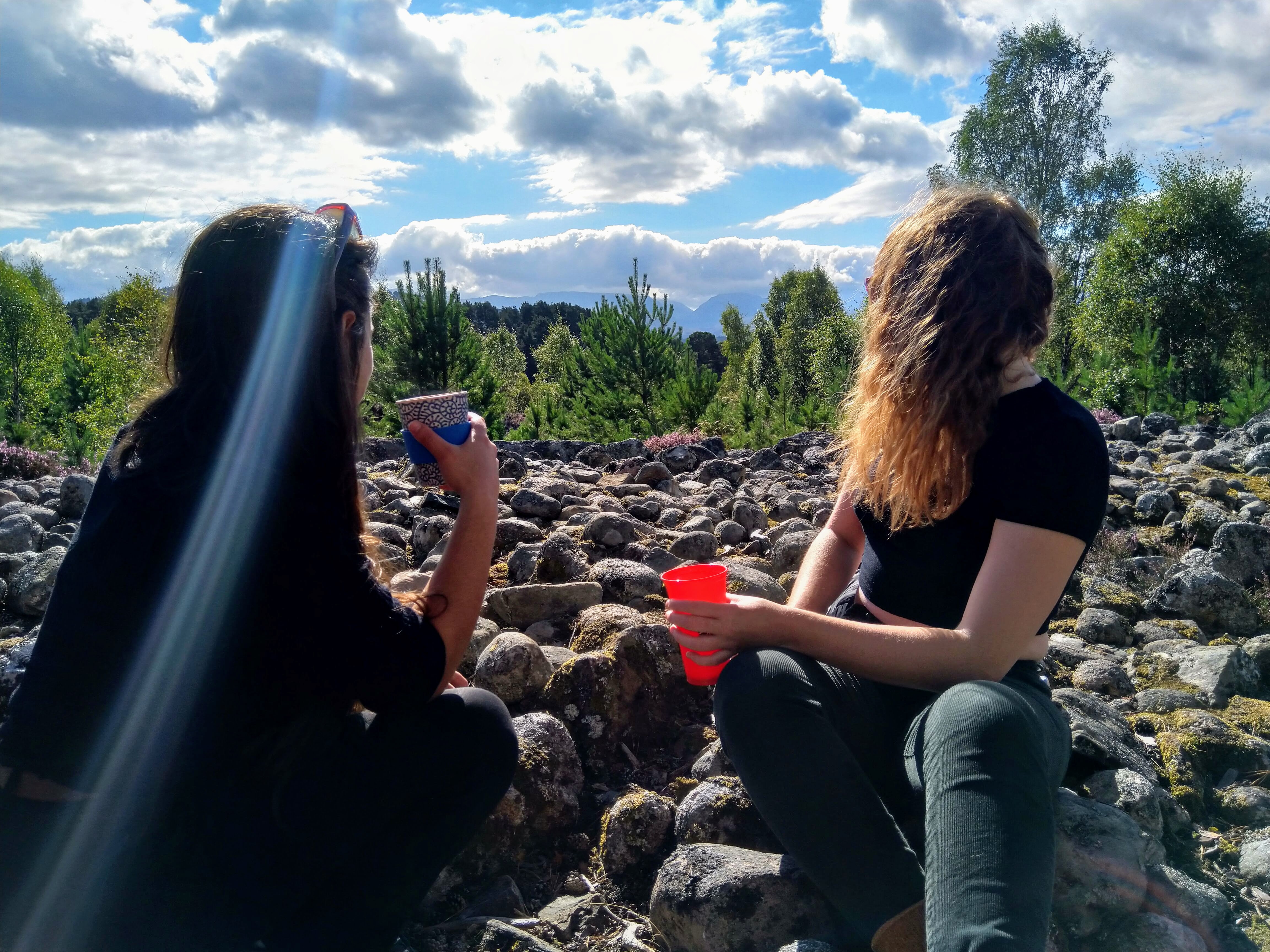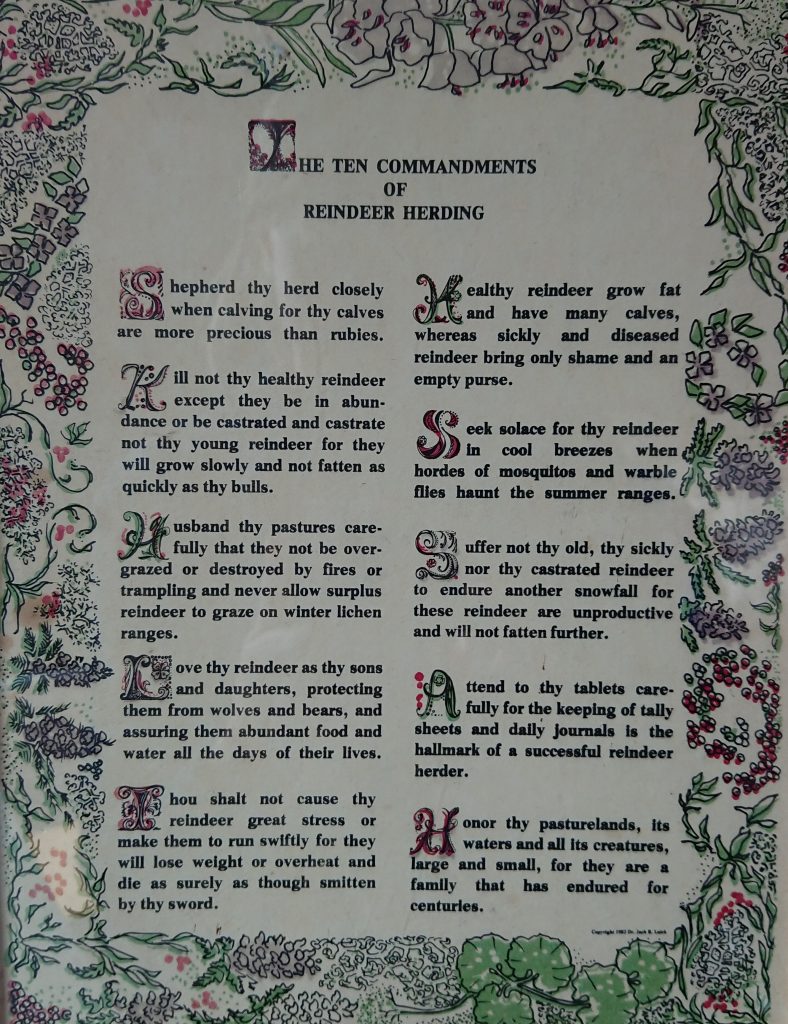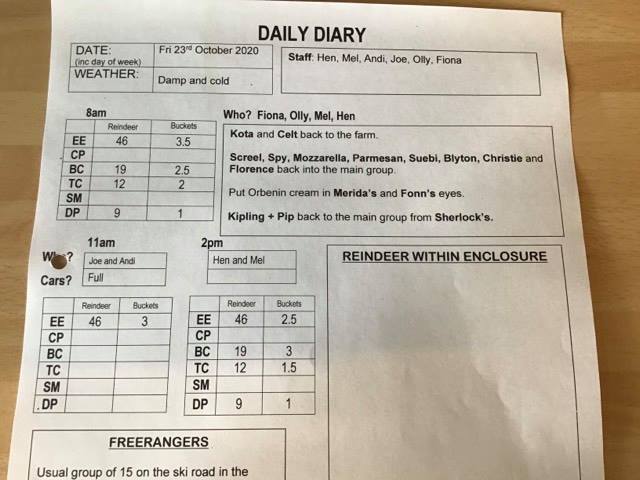Funny story…. For months Hen’s been meaning to write a blog about the new bridge en route to our hill enclosure, but eventually this autumn found herself too short of time and suggested to Andi that she wrote it instead, hence Andi’s recent blog. And then, displaying a woeful level of forgetfulness, Hen found the blog that SHE WROTE HERSELF, and had NO memory of writing…Wow. So, you might as well read this one too.
I often talk to people who came to visit years ago but can’t remember much about their walk to the reindeer herd in the hill enclosure, other than the fact ‘there was a big bridge’ over a river. Ah, we say knowingly, you mean Utsi bridge. It’s become an iconic part of our most common route on to the mountains to see the reindeer herd. (But it’s not the sole route we use, so if you read on and have no memory of a bridge, then you aren’t going mad – we probably just took you to meet the herd in a different location!)
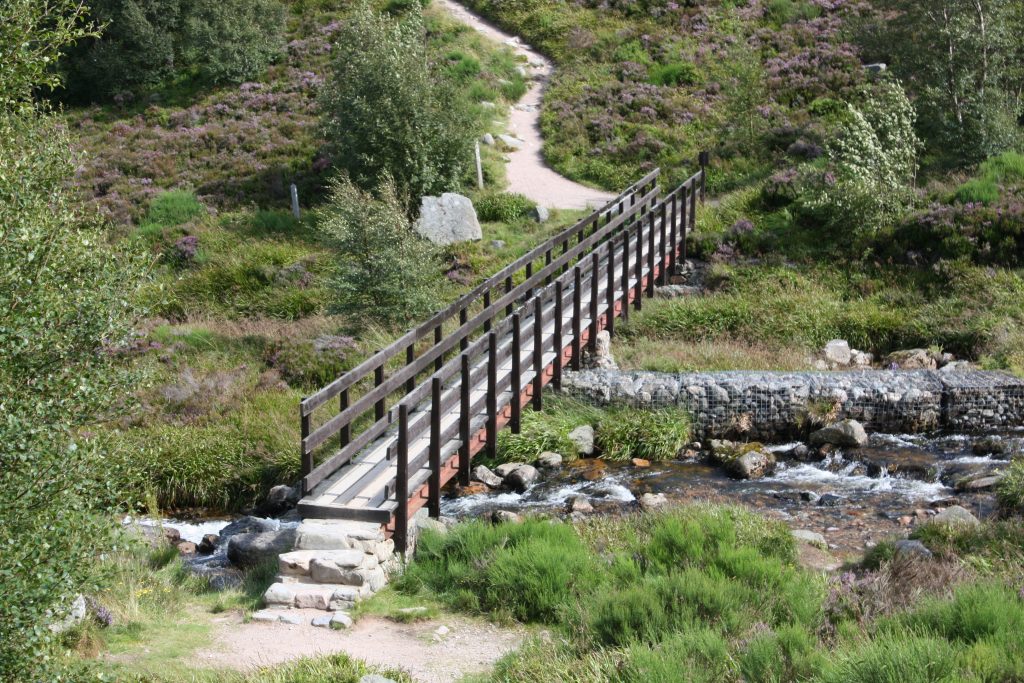
The original Utsi bridge over the Allt Mor (the river which leads down to Loch Morlich) was built in the 60s, and consisted of not much more than telegraph poles with some planks on them, or at least that’s what it looks like in the photos I’ve seen that remain of it.
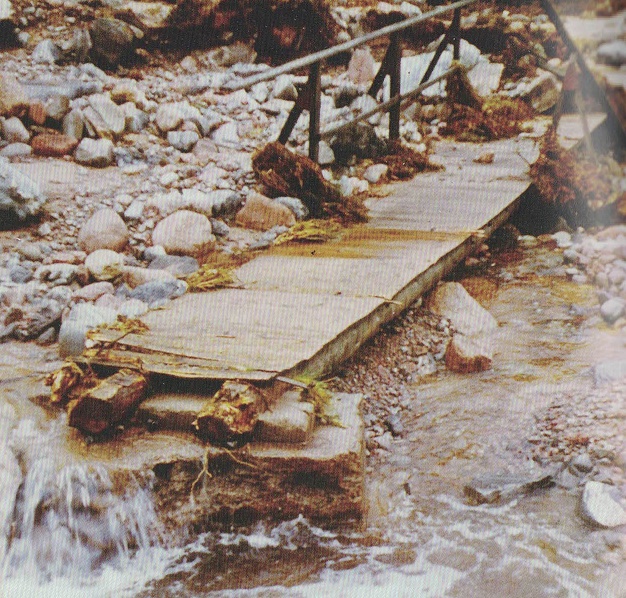
Bridge mark II was built in 1979 by the Army, and it’s this one, with it’s high-sided handrails, that is the one that most people will remember. I can’t imagine how many times I’ve crossed it, but being as between late April and early January it’s rare for a working day to pass without doing so at least twice (i.e. once in each direction), and often a lot more – it’s certainly a lot of times. I think my record was 9 or 10 trips up to the hill enclosure once whilst shuttling boardwalking material up there. I cursed the lack of vehicle access that day!
Many reindeer hooves have crossed the bridge over the years too. Obviously reindeer can, and do, cross the river directly a lot of the time, but the free-ranging herd will cross the bridge instead at times if making their way towards the enclosure of their own accord. Tell-tale droppings on the bridge give away their route!
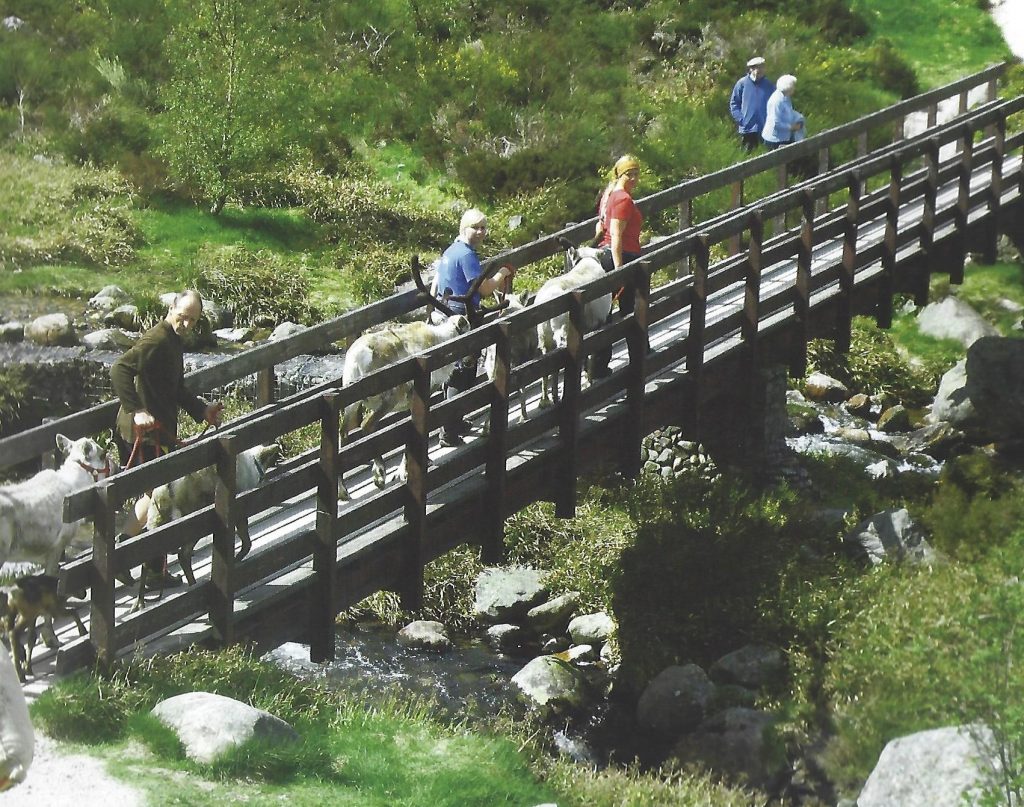
We lead reindeer to and from the enclosure over the bridge, and the most eventful time is always their very first time, usually at around 5 months old, learning to walk on a halter. Actually the bridge itself is no issue at this point – it’s getting on the bridge which can be really hard as there are steps up on to it.
After over 40 years, the second incarnation of Utsi bridge was starting to show signs of wear and tear, the central support starting to get more undermined each time the river was in spate, and eventually it became obvious that it needed to be replaced. We don’t own the land that the bridge is built on so this didn’t come down to us thankfully, although we did attend meetings with regards to how it would happen, and made sure that the plan was definitely to complete the new bridge fully before the old one was removed!
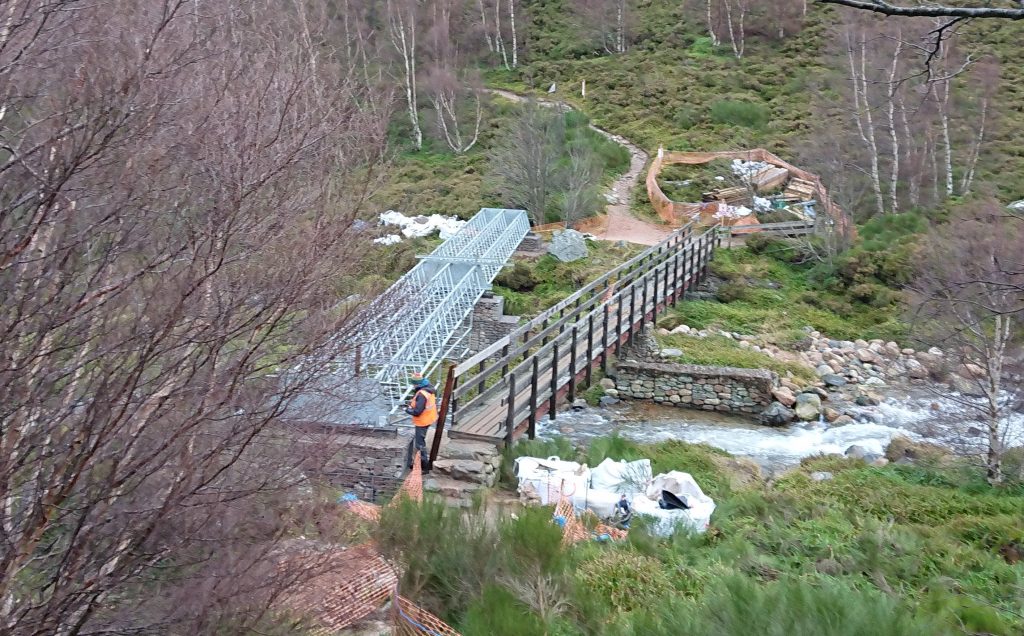
Work began in November 2020, but ground to a juddering halt with the second lockdown after Christmas, and even though construction was permitted to continue, the impassable road and deep snow conditions of January and February 2021 made any progress an impossibility. It was mid-April before the bridge was finally completed, just before we re-opened to the public in late April, so all of our visitors in 2021 have walked to the reindeer herd via Utsi bridge mark III. This version is quite considerably bigger, and makes quite a landmark, but I’m not yet as fond of it as I was the old one.
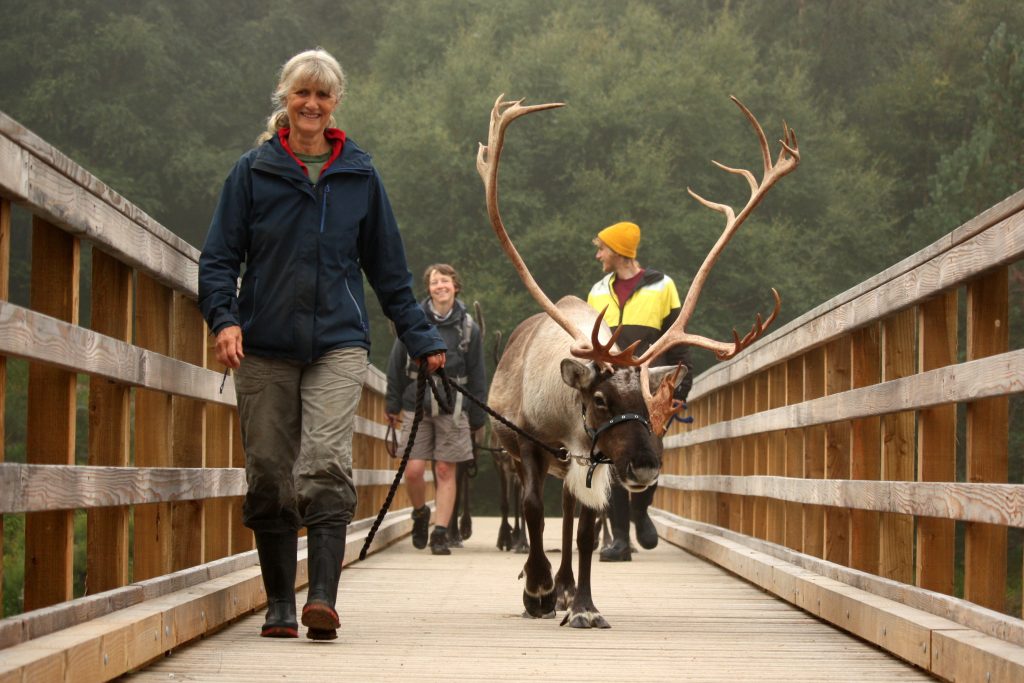
We all kept pieces of the old bridge, so I have two of the uprights which once supported the handrails in my workshop at home. Maybe one day I’ll use them for gateposts somewhere! Alan and Tilly (owners of the reindeer herd) kept the four 30’ long steel girders that stretched the 60’ span of the river, which had to be helicoptered out from the site to the nearby car-park, and then collected via tractor and (large!) trailer! No doubt they will one day become part of one of Alan’s many sheds.
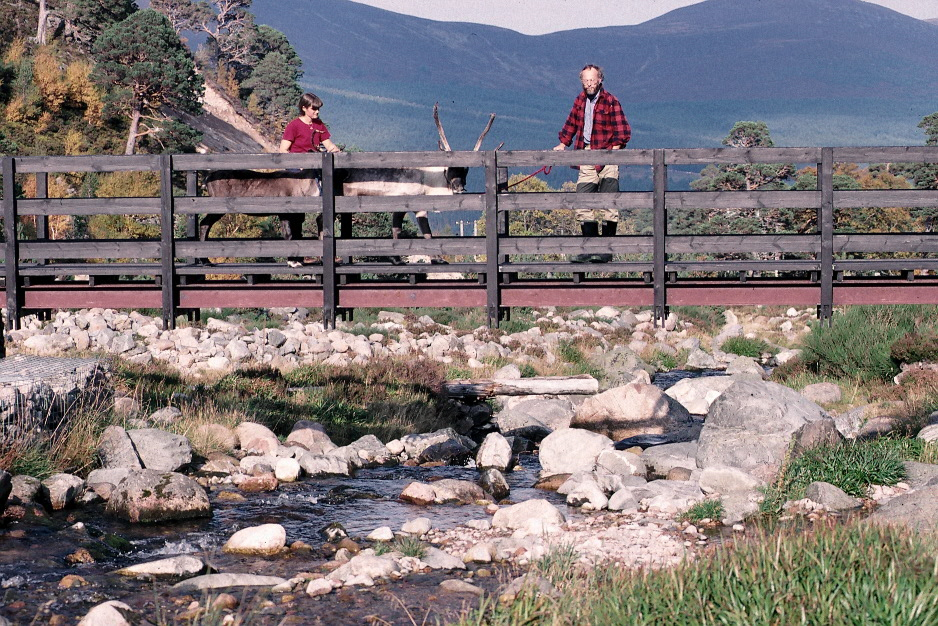
So if you are visiting us, particularly in the summer and autumn months, have your camera ready for this iconic bridge in case you happen to be lucky enough to cross it en route to the reindeer herd. You’ll be following in the footprints of thousands of visitors, hundreds of reindeer and dozens of reindeer herders, spanning nearly 7 decades.
Hen

